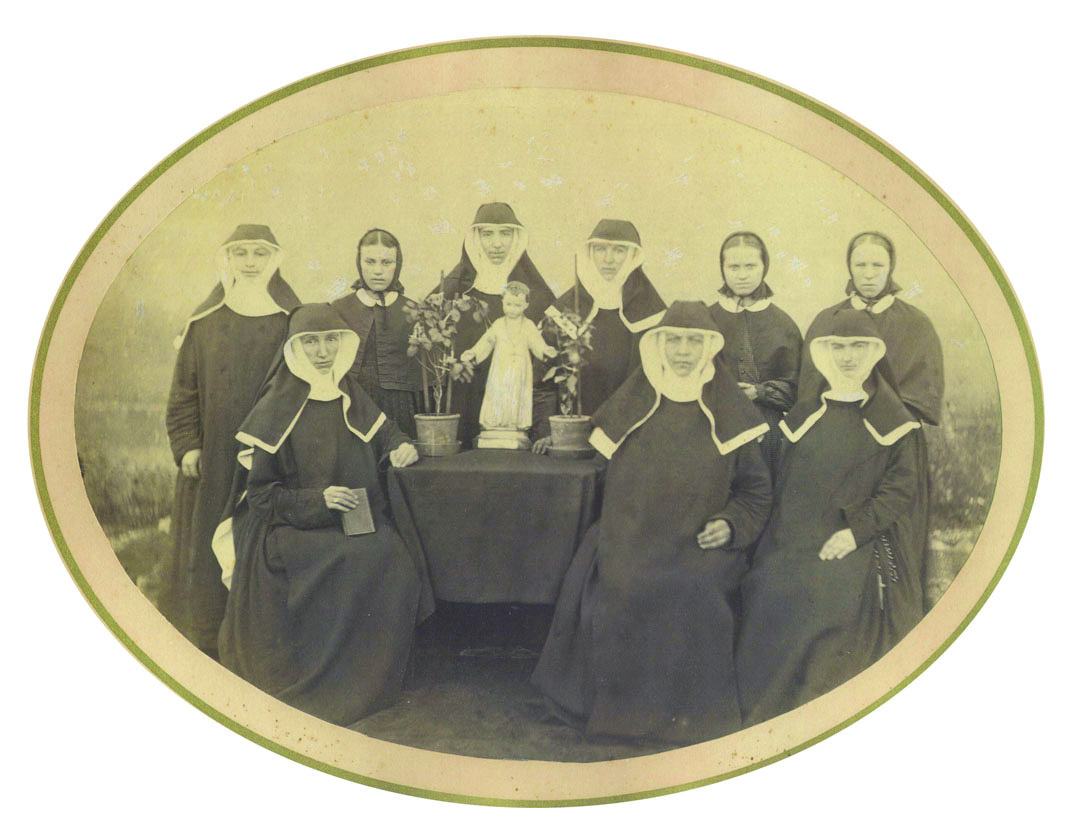Our History
The Sisters of St. Benedict came to Ferdinand, Indiana, in 1867 to fill a need and make a difference in the lives of local settlers. Through the years, our sisters have adapted to the needs of a changing world. Yet we continue to live faithfully the 1,500-year-old tradition of Benedictine life—we seek God together, pray daily, and share our lives and ministries with others.
The story of all Benedictines begins in sixth-century Italy. St. Benedict wrote his Rule for monks living in community and dedicated to prayer and work. Monasteries for men (and then women) were established, and monasticism spread throughout Europe. In 1852, the first Benedictine women arrived in the United States from St. Walburga Abbey in Eichstätt, Germany. They settled in St. Marys, Pennsylvania, and soon established multiple foundations, including one at Erie, Pennsylvania. From Erie, sisters went to Covington, Kentucky, where they founded St. Walburg Monastery.

By 1867, the young Catholic settlement of Ferdinand, Indiana, needed teachers who could speak German. On August 20, 1867, four sisters arrived from St. Walburg — Sisters Benedicta Berns, Xaveria Schroeder, Rose Chapelle, and Clara Vollmer. They began teaching at the Ferdinand parish school, and in 1870, they opened Academy Immaculate Conception (later renamed Marian Heights Academy), a boarding school for girls.
In 1871, our community became independent of St. Walburg Monastery, and Sister Benedicta Berns was elected the first prioress. The rapidly growing community soon needed a larger monastery. In 1886, 72 sisters moved into the quadrangle, a traditional monastic structure they built northeast of St. Ferdinand Parish.
Our teaching ministry expanded from the 1870s well into the 20th century. Eventually our sisters taught in more than 75 schools in 12 states and five countries. In 1914, the community established a training school for teachers, St. Benedict Normal College. Under the leadership of Mother Seraphine Kordes, our new church was constructed from 1915 to 1924.
The 20th century was a time of great expansion, but by the end, the Ferdinand Benedictines, like all religious communities, experienced declining numbers and corporate changes — among them, the closing of St. Benedict College in 1970 and Marian Heights Academy in 2000. But with the losses have come growth, new life, and new opportunities.
In 1978, we opened Kordes Retreat Center to offer programs for spiritual renewal and personal growth, and to provide a place of peace and hospitality for outside groups. In 2017, we moved the programs from Kordes to the new Benedictine Hospitality Center, where we welcome all guests like Christ to stay and pray. We provide directed retreats, facilitation services, spiritual direction, and many other programs as part of our Spirituality Ministry.
In 2015, St. Benedict’s Brew Works opened in what had been the Academy’s art building and the Academy’s gymnasium was converted into Monastery Event Hall. Benet Hall was transformed into affordable housing for senior citizens in 2016.
Our community’s success in consistently gaining new members has been documented in The Wall Street Journal, on CNBC, on ABC’s “Nightline,” and in other media internationally. For many years, religious communities from around the world came to Ferdinand for annual vocations workshops, and members of our community traveled to other places providing consultation and guidance. While we do not have large numbers of women entering, we continue to average one or two new members per year.
Today, Monastery Immaculate Conception stands as a tangible sign of our sisters’ enduring faith, a presence of peace, and a beacon of hope for all God’s people. Spanning three centuries, we continue to affirm the value of the monastic tradition and to believe in a dynamic future for religious life.